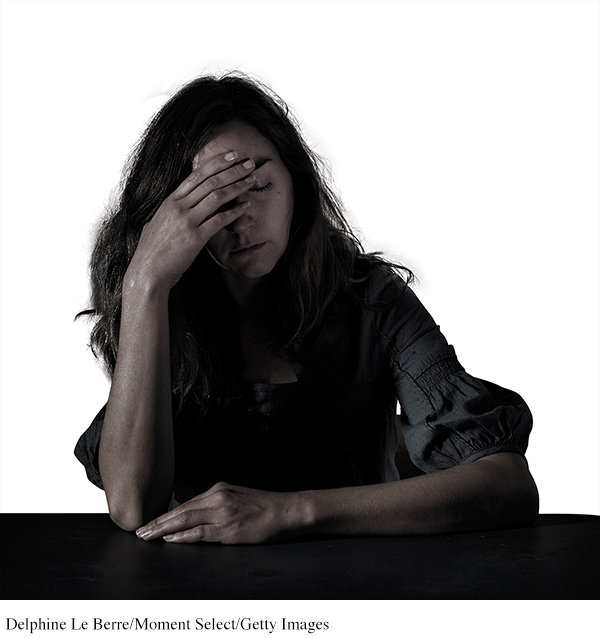Chapter Introduction
13
Psychological Disorders

SURVEY THE
CHAPTER
Defining Psychological Disorders
Understanding Psychological Disorders
THINKING CRITICALLY ABOUT: ADHD—
Classifying Disorders—
Anxiety Disorders
Obsessive-
Posttraumatic Stress Disorder (PTSD)
Understanding Anxiety Disorders, OCD, and PTSD
Tolerance and Addictive Behaviors
Depressants
Stimulants
Hallucinogens
Understanding Substance Use Disorders
Major Depressive Disorder
Bipolar Disorder
Understanding Major Depressive Disorder and Bipolar Disorder
Suicide and Self-
Symptoms of Schizophrenia
Onset and Development of Schizophrenia
Understanding Schizophrenia
Eating Disorders
Dissociative Disorders
Personality Disorders
I felt the need to clean my room at home in Indianapolis every Sunday and would spend four to five hours at it. I would take every book out of the bookcase, dust and put it back. At the time I loved doing it. Then I didn’t want to do it anymore, but I couldn’t stop. The clothes in my closet hung exactly two fingers apart. . . . I made a ritual of touching the wall in my bedroom before I went out because something bad would happen if I didn’t do it the right way. I had a constant anxiety about it as a kid, and it made me think for the first time that I might be nuts.
Marc, diagnosed with obsessive-
Whenever I get depressed it’s because I’ve lost a sense of self. I can’t find reasons to like myself. I think I’m ugly. I think no one likes me. . . . I become grumpy and short-
Greta, diagnosed with depression (from Thorne, 1993, p. 21)
Voices, like the roar of a crowd, came. I felt like Jesus; I was being crucified. It was dark. I just continued to huddle under the blanket, feeling weak, laid bare and defenseless in a cruel world I could no longer understand.
Stuart, diagnosed with schizophrenia (from Emmons et al., 1997)
Now and then, all of us feel, think, or act in ways that may resemble a psychological disturbance. We get anxious, depressed, withdrawn, or suspicious, just less intensely and more briefly. So it’s no wonder that we sometimes see ourselves in the psychological disorders we study. “To study the abnormal is the best way of understanding the normal,” said William James (1842–
Personally or through friends or family, many of us will know the confusion and pain of unexplained physical symptoms, irrational fears, or a feeling that life is not worth living. Worldwide, some 450 million people suffer from mental or behavioral disorders (WHO, 2010). Among American college students, about 1 in 3 reports an apparent mental health problem (Eisenberg et al., 2011). This is slightly higher than the U.S. National Institute of Mental Health’s estimate that 1 in 4 adult Americans has a “diagnosable mental disorder in a given year” (2013; TABLE 13.1). And, although rates and symptoms vary by culture, two of these disorders—
| Psychological Disorder | Percentage |
|---|---|
| Generalized anxiety disorder | 3.1 |
| Social anxiety disorder | 6.8 |
| Phobia of specific object or situation | 8.7 |
| Depressive disorders or bipolar disorder | 9.5 |
| Obsessive- |
1.0 |
| Schizophrenia | 1.1 |
| Posttraumatic stress disorder (PTSD) | 3.5 |
| Attention- |
4.1 |
Data from: National Institute of Mental Health, 2013.